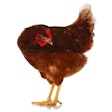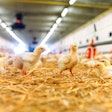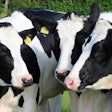
The Brazilian poultry industry may have had its difficulties in 2022 but it nevertheless closed the year in positive territory. So much so that Brazil has now become the second-largest poultry producer in the world, overtaking China and sitting slightly behind the U.S.
Ricardo Santin, president of industry association the Brazilian Association of Animal Protein (ABPA), speaking in mid-December, announced that, for 2022, the country would produce 14.5 million metric tons (MT) of chicken meat, an increase of 1.5% compared with 2021.
For 2023, Santin believes that output will grow by a further 2% to reach 14.75 million MT – once again breaking previous records.
Overcoming difficulties
The industry may have started 2022 with strongly rising input costs and difficulties in its home market, but strong demand from overseas was able to more than compensate for reduced consumption at home. Exports last year are thought to have risen by 5% to stand at 4.85 million MT. In contrast, domestic sales of chicken meat declined by 0.2% to stand at 9.7 million MT, with per capita chicken meat consumption declining by 0.8% to 45.1 kg.
The situation in the home market will, however, improve this year. Per capita chicken meat consumption is expected to be 0.5% higher, at 45.5 kg, with the home market absorbing 9.7 million MT of chicken meat. Nevertheless, it will still be in export markets where the industry records most growth. Exports are forecast to grow by 8.5% to stand at 5.2 million MT.
There are a number of factors that should favor Brazilian producers this year. Ongoing outbreaks of avian influenza (AI) and supply issues in numerous countries are resulting in strong global demand for chicken meat, and, despite AI emerging in neighboring countries, Brazil has managed to maintain its sanitary status.
Additionally, the shortages and historically high input costs that characterized the start of 2022, with smaller producers particularly affected, have gradually weakened.
Where feed is concerned, a record soya harvest is now predicted, and the perspectives for corn are also strong.
Brazil is also expected to escape recession this year. While at 1.4%, growth in the economy will be below the 3.1% thought to have been achieved in 2022. The economic outlook remains positive. The country’s Institute for Applied Economic Research (IPEA) forecasts that the agricultural sector will expand by 11.6% this year.
Announcing the forecasts for this year, Santin noted that the global poultry industry had to face a difficult year with challenges including high production costs and AI in many regions. He continued that Brazil remained free from the disease and would continue to support food security in the 150 countries to which it exports.
Egg production
Egg production in Brazil is thought to have declined last year, dropping by 5% to stand at 52 billion units. Per capita egg consumption in the country declined by 6% to 241 units, while exports, at 10,000, were 12% lower.
For the year ahead, production is expected to further decline, falling by 2% to 51 billion units. Per capita consumption at 235 units will also be lower, but exports are forecast to rise by 10% to reach 11,000 MT.
Brazil’s first quarter poultry exports sharply higher


















